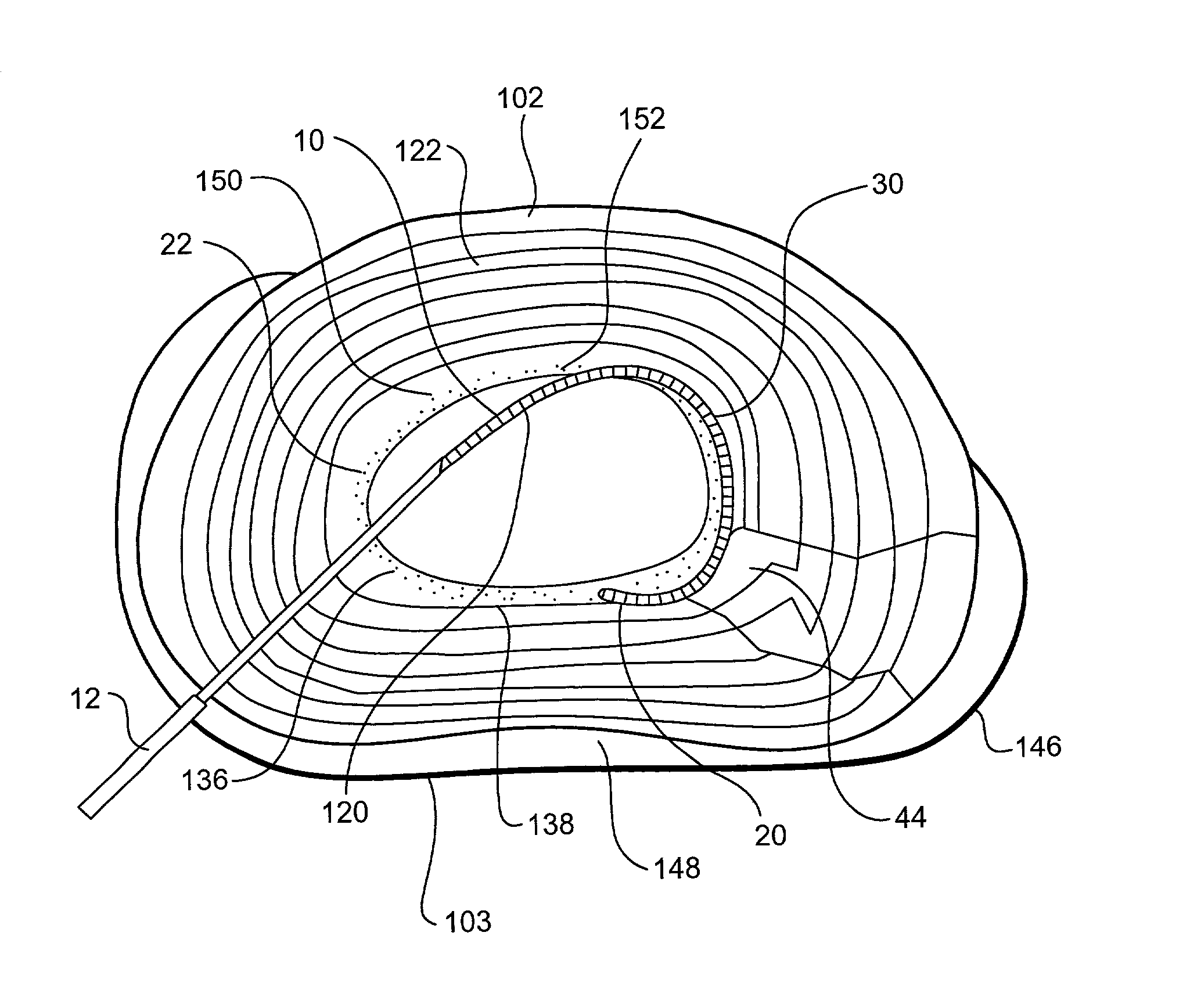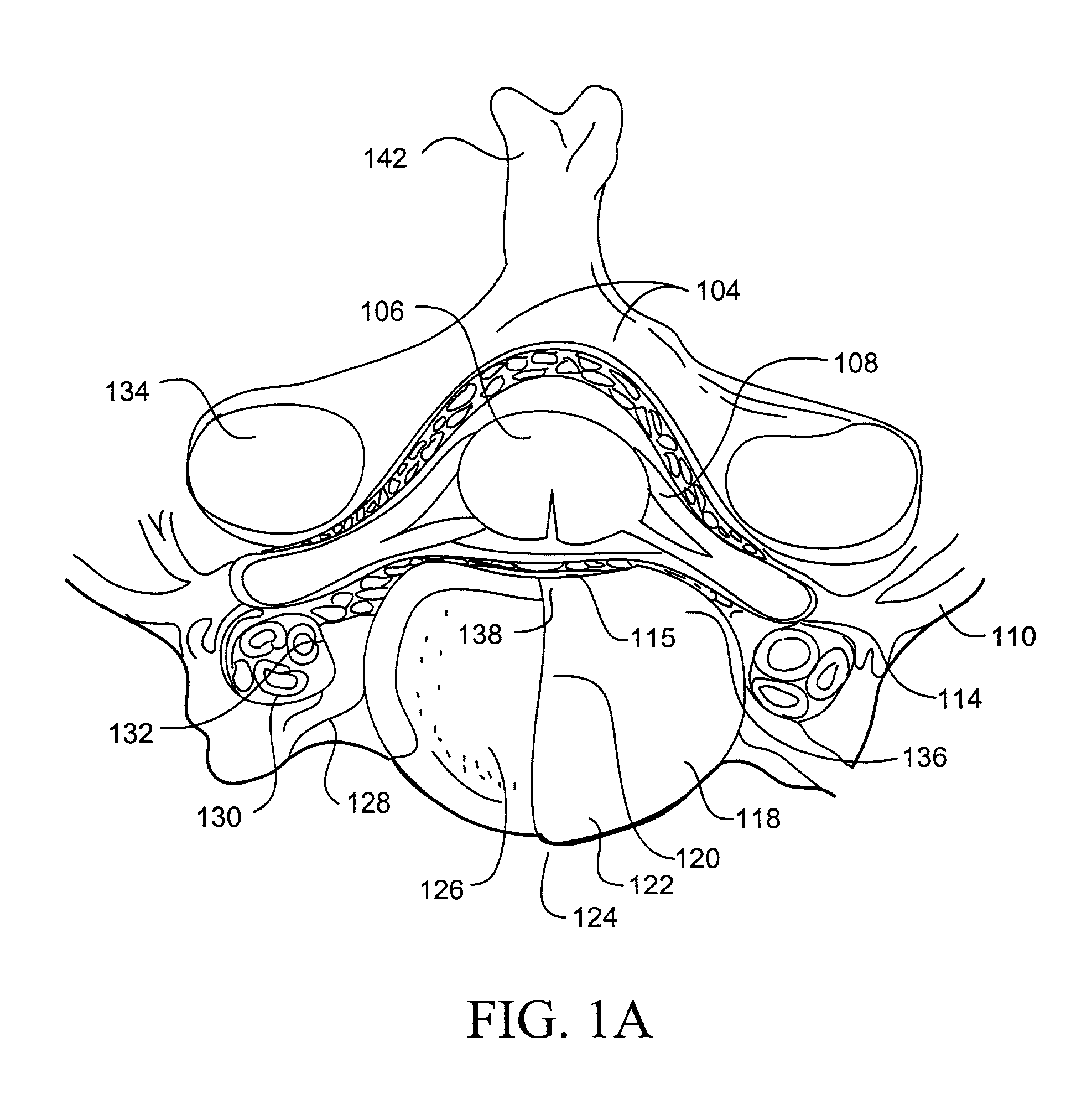Apparatus and method for accessing and performing a function within an intervertebral disc
a technology of intervertebral discs and apparatuses, which is applied in the direction of prosthesis, catheters, therapy, etc., can solve the problems of irritating surrounding structures, causing pain and discomfort, and leaking of biochemicals within the discs from the contained intervertebral discs
- Summary
- Abstract
- Description
- Claims
- Application Information
AI Technical Summary
Benefits of technology
Problems solved by technology
Method used
Image
Examples
Embodiment Construction
[0067] The present invention provides novel apparatus and methods for accessing and performing functions within an intervertebral disc, particularly for treating intervertebral disc disorders such as sealing fissures of the annulus fibrosus, which may or may not be accompanied with contained or escaped extrusions. The present invention may also involve the removal or addition of material to the intervertebral disc.
[0068] In one embodiment, an apparatus is provided for accessing a selected section of an intervertebral disc. The apparatus comprises a catheter having a lumen; and a guide wire having a distal portion and a proximal portion, and configured to be positioned within and moved relative to the lumen of the catheter; wherein the guide wire is capable of navigating itself within an intradiscal section of the intervertebral disc adjacent and / or through an inner wall of an annulus of the disc to the selected section of the disc and the catheter is capable of being advanced relati...
PUM
 Login to View More
Login to View More Abstract
Description
Claims
Application Information
 Login to View More
Login to View More - R&D
- Intellectual Property
- Life Sciences
- Materials
- Tech Scout
- Unparalleled Data Quality
- Higher Quality Content
- 60% Fewer Hallucinations
Browse by: Latest US Patents, China's latest patents, Technical Efficacy Thesaurus, Application Domain, Technology Topic, Popular Technical Reports.
© 2025 PatSnap. All rights reserved.Legal|Privacy policy|Modern Slavery Act Transparency Statement|Sitemap|About US| Contact US: help@patsnap.com



